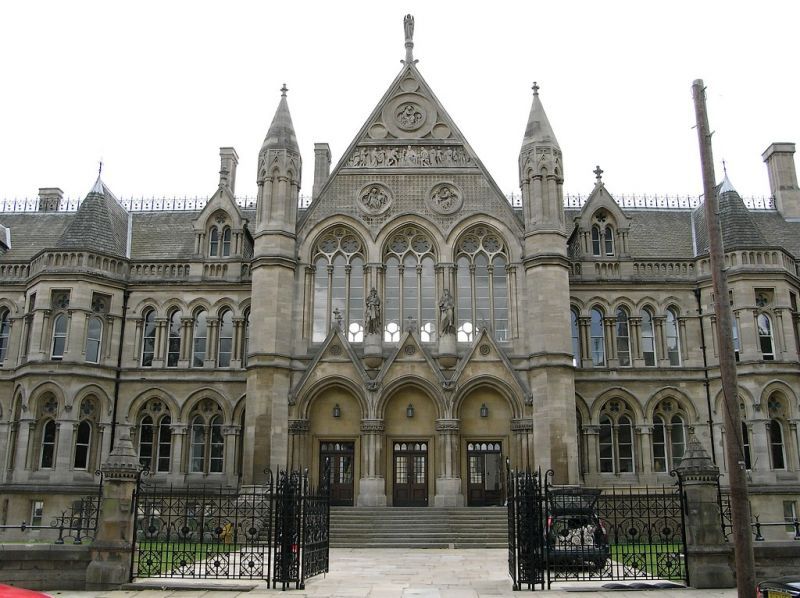
This is the Shakespeare Street facade of what was originally Nottingham's University College, and is now the Arkwright Building at Nottingham Trent University. Lawrence began studying here in 1906, and left two years later with his teaching qualification, but without a degree. Lawrence uses his experience there in The Rainbow, when Ursula attends:
The big college built of stone, standing in the quiet street, with a rim of grass and lime-trees all so peaceful: she felt it remote, a magic-land. Its architecture was foolish, she knew from her father. Still, it was different from that of all other buildings. Its rather pretty, plaything, Gothic form was almost a style, in the dirty industrial town. She liked the hall, with its big stone chimney-piece and its Gothic arches supporting the balcony above. To be sure the arches were ugly, the chimney-piece of cardboard like carved stone, with its armorial decoration, looked silly just opposite the bicycle stand and the radiator, while the great notice-board with its fluttering papers seemed to slam away all sense of retreat and mystery from the far wall.

